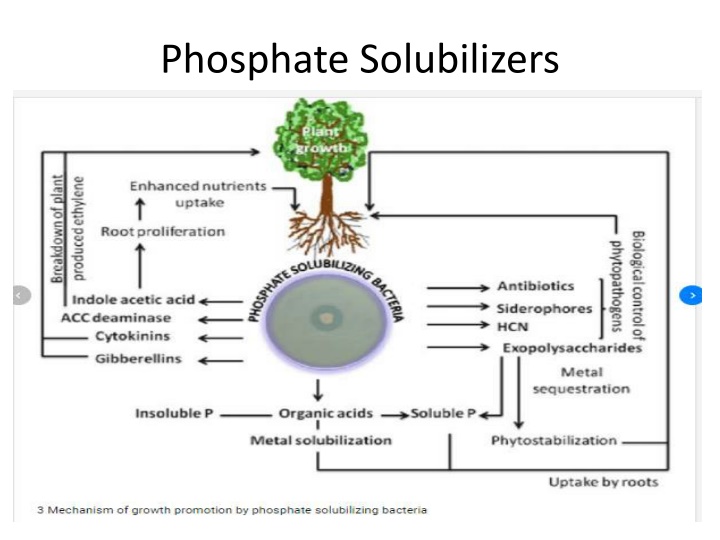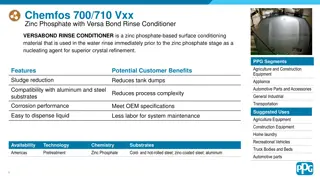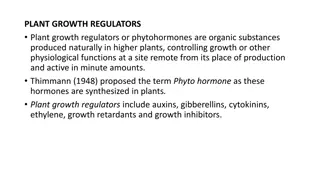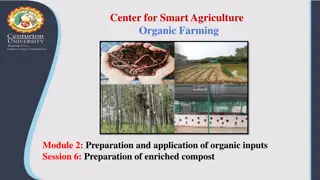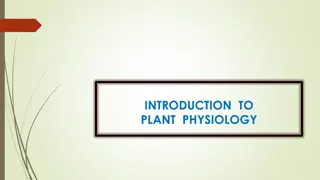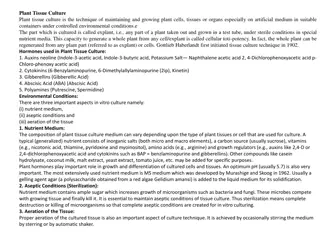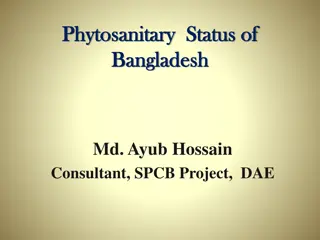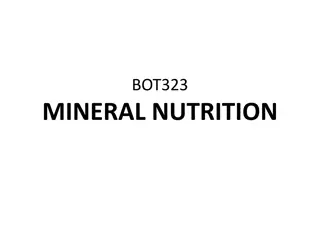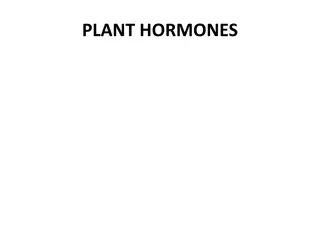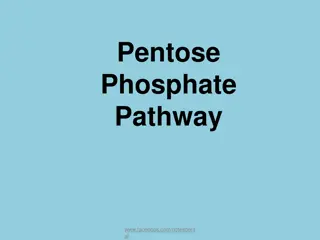Phosphate Solubilizers and Plant Growth
Phosphate solubilizers play a crucial role in making phosphorous available to plants for their growth. These microorganisms can solubilize phosphates present in the soil, increasing crop yield significantly. Learn about isolating, mass producing, and using phosphate solubilizers in field applications for enhancing plant nutrition.
Download Presentation

Please find below an Image/Link to download the presentation.
The content on the website is provided AS IS for your information and personal use only. It may not be sold, licensed, or shared on other websites without obtaining consent from the author.If you encounter any issues during the download, it is possible that the publisher has removed the file from their server.
You are allowed to download the files provided on this website for personal or commercial use, subject to the condition that they are used lawfully. All files are the property of their respective owners.
The content on the website is provided AS IS for your information and personal use only. It may not be sold, licensed, or shared on other websites without obtaining consent from the author.
E N D
Presentation Transcript
Phosphate Solubilizers Phosphorous is the second vital nutrient next to nitrogen required for he growth of microorganisms and plants. But Phosphorous is not avialable to plants. Only 1-2% phosphorous is supplied to aboveground parts of the plants. The most common phosphate fertilizer are superphosphate. The basic material for phosphate fertilizer is the rock phosphate. There are several phosphate solubilising microorganisms (PSM) present in soil, for example the species of Pseudomonas, Bacillus, Micrococcus, Flavobacterium, Aspergillus, Penicillum, Fusarium, Sclerotium etc. They can utilize tri-calcium phosphate, apatite, rock, phosphate as a sole phosphate source present in the medium. The indication of utilization is that they produce clearing zones around the colony. They secrete organic acids such as acetic acid, succinic acid, propionic acid, formic acid etc. Bound form of phosphates are solubilized and charged molecules of phosphorous are absorbed by the plants. PSM save 30-50kg/ha of superphosphate and increase crop yield upto 200-500 Kg/Ha.
Isolation of PSM For isolation of PSM, Pikovskaya medium is prepared, mixed with 0.5% gum arabic, autoclaved and dispensed in petri plates. 1g soil is collected from field and serially diluted. 1ml of soil-water suspension, inoculated on Pilovskaya medium, icubated at 28 C for about 4-5 days. Only PSM grow and form colony which can be identified due to formation of clear zone around each colony. Such colonies are picked up, purified and preserved for further use.
Mass production PSM are produced on a large scale in a large fermentor containing Pikovskaya medium. Starter culture is transferred in a bioreactor and grown at 28 C for 10-15 days. Cultures broth is harvested when cells have attained 108-109cells/ml.
Production of carrier based inoculant Different carrier (e.g wood charcoal, peat mixture or mixture of wood charcoal and soil) are used for inoculum production. The carrier is powdered, neutralized, sterilized and mixed with broth inoculant. Carrier and inoculant are properly mixed till 40% moisture is attained. This mixture is left for curing by leaving it in a sterile chamber then it is filled in polythene bags and stored at 15-20 C.
Field application Slurry is prepared by diluting the PSM in water and treating with gum arabic and CaCO Seeds to be sown in field are mixed in slurry for bacterisation and dried in shade. The PSM adher on seed surface, then the bacterised seeds are sown in field. Scientist at Indian Agricultural Research Institute, New Delhi have invesigated the new efficient bacteria Pseudomonas striata and Bacillus polymyxa and fungi Aspergillus awamori that can be used as PSM. PSM carrier based inoculant has been prepared. This preparation is known as IARI Microphos Culture .
